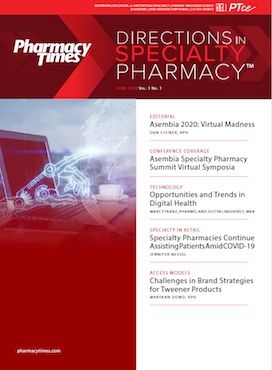Pulmonary Arterial Hypertension: Working With the Multidisciplinary Team Toward Low-Risk Status
Patients with this chronic, progressive illness may encounter a wealth of drug-related issues that clinicians need to navigate through a coordinated, multidisciplinary approach.
A ROBUST VIRTUAL SYMPOSIUM held in conjunction with the Asembia Specialty Pharmacy Summit covered pulmonary arterial hypertension (PAH). Patients with this chronic, progressive illness may encounter a wealth of drug-related issues that clinicians need to navigate through a coordinated, multidisciplinary approach. New and evolving treatment approaches can provide some relief to affected individuals, and explanations throughout the session were especially valuable to participants.
Amy L. Dzierba, PharmD, FCCM, FCCP, BCCCP, opened the session by discussing the prevalence of PAH (5-50 people/million adults), indicating it prevails mostly in the fourth and fifth decades of life. Women are more likely to develop PAH than men, and epidemiologists indicate that its burden is underestimated because of diagnostic delay and misdiagnosis. Unfortunately, long-term survival tends to be short, with most patients living less than 5 years.
Dzierba concisely covered risk factors (collagen vascular disease, congenital heart disease, portal hypertension, HIV infection, and drugs and toxins) and susceptibility, especially the association with the abnormal BMPR2 gene and other genetic factors. Inflammation and vasoconstriction appears to be related to endothelial dysfunction, including depressed nitric oxide, reduced prostacyclin, increased endothelin, and increased thromboxane. This leads to vascular smooth muscle dysfunction; thrombosis and vascular remodeling follow, further progressing the disease.
In the early stages, patients will report nonspecific symptoms, such as dyspnea, fatigue, weakness, chest pain, and syncope. As PAH progresses, patients experience elevated jugular venous pressure, hepatomegaly, lower extremity edema, and abdominal distention.
Risk status takes clinical, functional, exercise, and hemodynamic parameters into account. Achievement of low-risk status is the main treatment goal because registry data show an association with better survival and outcomes. In addition, patients with low-risk status are more likely to avoid transplant.
Kristen Pogue, PharmD, BCPS (AQ Cardiology), discussed the 5 FDA-approved pharmacotherapeutic classes for PAH: (1) prostacyclin analogues, (2) endothelin receptor antagonists, (3) phosphodiesterase type-5 inhibitors, (4) soluble guanylate cyclase stimulators, and (5) prostacyclin receptor agonists. Practitioners may use these agents alone or in combination as complementary mechanisms of action target the various underlying pathophysiologic mechanisms of the disease. Combination therapy is useful but requires close monitoring to manage potential adverse effects (AEs; peripheral edema, headache, hypertension), avoid drug—drug interactions, and attain the best response. Assessing for and addressing AEs are crticial as these may also affect adherence.
To minimize AEs, clinicians should consider staggered initiation and/or careful uptitration of drugs. The former approach structures a short delay between the initiation of therapies into the plan. In the latter, it is sensible to initiate 1 or both therapies at lower-than-recommended doses.
Pogue covered drug—drug interactions, stressing that many of these drugs have cytochrome P450 interactions, and they may interact with each other. She emphasized that pharmacists need to examine the patient’s medication burden and dosing frequencies, and have a high suspicion of nonadherence if the patient needs dose escalation, increased oxygen, or emergency or hospital care. Nonadherence may also be a problem if the patient is experiencing rebound symptoms or clinical deterioration. Pogue highlighted that, often, parenteral prostanoids are associated with medication errors, so pharmacists need to be vigilant. Finally, she reminded the audience that many of these medications have FDA-mandated REMS programs, and pharmacists need to be thoroughly familiar with each program’s requirements.
Dzierba then wrapped up the session by highlighting treatment options in the pipeline. These include both new agents and the repurposing of therapies approved for other indications.

